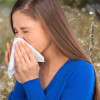
 Dr. KK Aggarwal
Dr. KK Aggarwal
Meditation Positions: All You Need To Know
Meditation Positions: All You Need To Know
Why does Position Matter in Meditation?
Meditation Is Becoming More Popular As A Result Of Its Numerous Advantages. Meditation Isn't One-Size-Fits-All; There Are Many Styles And Ways To Choose From. But You Don't Have To Read Every Book On The Subject Or Sign Up For Retreats All Over The World To Get Started. Simply Sit Back, Relax, And Take A Deep Breath Where You Are.
Meditation May Be Practiced At Any Time, From Anywhere, And For Any Amount Of Time. Whether You Are New To Meditation Or A Seasoned Practitioner, It Is Critical To Maintain A Flexible Approach. Developing A Practice That Works For You Is Essential, And You Will Most Likely Adapt And Adjust Your Practice To Meet Your Changing Requirements.
Chair-Sitting Meditation
One May Easily Meditate While Sitting On A Chair, This Is An Excellent Technique For Lunchtime Refreshment At Work. You May Meditate While At Work Or On The Road.Sit In Your Chair With Your Back Straight And Your Feet Flat On The Floor To Get Into The Proper Meditative Position. With Your Knees, They Should Make A 90-Degree Angle. You May Need To Move To The Chair's Edge.Sit Up Straight And Align Your Head And Neck With Your Spine. For Extra Support, Lay A Cushion Behind Your Lower Back Or Behind Your Hips.If You Don't Know What To Do With Your Hands, Lay Them On Your Knees Or On Your Lap.
Meditation while Standing
If You Feel More At Ease Standing, Try Standing Meditation.Stand Tall With Your Feet Shoulder-Width Apart To Achieve This. Adjust Your Feet So That Your Heels Are A Little Inward And Your Toes Are Somewhat Outward.Bend Your Knees Slightly Once You're In Place. With Each Exhalation, Allow Your Body To Root Down Through Your Feet. With Each Inhale, Imagine Your Energy Rising To The Summit Of Your Head.Place Your Hands On Your Abdomen To Feel Your Breath Move Through Your Body For Extra Relaxation.
Kneeling Meditation
Give It A Shot If You're In A Position Where You Can Comfortably Kneel Down. This Position Has The Advantage Of Making It Simpler To Maintain Your Back Straight.Rest On The Floor With Your Knees Bent. Your Shins Should Be Flat On The Floor, And Your Ankles Should Be Just Below Your Bottom. For Further Support And Reduced Pressure On Your Knees, Insert A Cushion Between Your Bottom And Heels. When You're In This Posture, You Shouldn't Feel Any Discomfort. If This Is The Case, Try Another Meditation Posture That Allows You To Be Pain-Free And Calm.Make Sure Your Weight Is Rooted Back And Down Through Your Hips. This Prevents You From Placing Too Much Strain On Your Knees.
Lying-Down Meditation
If You Lie Down, You May Find It Easier To Relax And Release Stress. In This Manner, Your Entire Body Is Supported.Lie On Your Back With Your Arms Stretched Beside Your Body To Do This. Your Feet Should Be Hip Width Apart, With Your Toes Turned Out To The Side.If This Is Too Difficult, Adjust The Posture To Support Your Lower Back. While Resting Down, Place A Cushion Beneath Your Knees To Slightly Raise Them. You May Also Lay Your Feet Flat On The Ground By Bending Your Knees.
The Connection Between Meditation & Position
Posture Is Crucial For Meditation, Although It May Be Approached In A Variety Of Ways. Begin Your Practice In A Position That Feels Natural To You. It Is Critical To Begin In A Comfortable Position So That You May Gradually Adjust Your Body Into The Proper Position Throughout Your Practice. Maintaining A Certain Posture May Help You Create A Good Goal Or Determination For Your Practice. When You Return To The Posture Or Position, Remind Yourself Of Why You're Practicing - To Be Present, To Feel Calm, Or For Any Other Reason You May Require.
Meditation Position with Seven Points
The Seven-Point Meditation Posture Is A Method Of Meditating While Sitting. There Are Seven Recommendations You May Follow To Help You Posture Your Body Appropriately. Of Course, You Are Free To Change Anything That Does Not Work For You. Approach The Exercise In The Same Manner You Would Your Posture. Your Physique Is Busy, Yet It Has A Softness To It.
Sitting
You can sit in a quarter, half, or full lotus position depending on how flexible your hips are. You can also sit cross-legged on a meditation cushion, towel, pillow, or chair, with your hips lifted higher than your heels. In most postures, you can obtain support with a cushion or a meditation bench. It is critical to select a comfortable position so that you can concentrate on your meditation.
Spine
Your Spine Should Be As Straight As Possible No Matter How You Sit. If You Have A Tendency To Slump Forward Or Sway Slightly Backward, Now Is The Moment To Gently Remind Yourself To Straighten Your Posture.With each breath, continue to root down into your body. With each inhalation, raise your body and extend your spine. Feel the energy line that runs from the base of your spine to the crown of your head. Maintaining a straight spine can assist you in being attentive.
Hands
You Can Place Your Hands On Your Thighs, Palms Facing Down. Keeping Your Hands Down Is Thought To Be More Grounded And To Aid In The Relaxation Of Your Body's Energy Flow.You Can Place Your Hands On Your Thighs, Palms Facing Down. Keeping Your Hands Down Is Thought To Be More Grounded And To Aid In The Relaxation Of Your Body's Energy Flow.Alternatively, you might stack your hands on your lap with your palms facing up. Place your right hand on top of your left hand, with your thumbs lightly touching. This hand posture is said to produce more heat and energy.
Shoulders
Maintain a calm and comfortable posture as you pull your shoulders back and down. This aids in keeping your heart open and your back strong.Check in with your posture from time to time during your practice. Maintain a straight spine by drawing the tops of your shoulders down and away from your ears. Take note of the height of your shoulders and whether one seems higher than the other so that you may adjust as required.
Chin
Maintain length in the back of your neck by keeping your chin slightly tucked in. Maintaining your posture is easier if you position your chin correctly. Maintain a calm expression on your face.You may discover that turning the corners of your mouth up slightly helps to relieve facial strain.
Jaw
Try to relax any jaw tension you may be retaining. Keep your jaw slightly open while pressing your tongue on the roof of your mouth. This relaxes the jaw, allows for unobstructed breathing, and delays the swallowing process.You may also extend your mouth and alleviate stress by doing a few exaggerated yawns before you meditate.
The Ending Note
Positions Are Very Important When It Comes To Meditation. But What’s Most Important Is Being Able To Clear All Thoughts From Your Mind And Maintain That State For A Prolonged Amount Of Time. To Attain This State, If You Find One Position Better Suited Than The Other, Stick With That. Make Sure You’re Never Under Any Pain While Trying Different Meditation Positions.
References:

Dr. KK Aggarwal
Recipient of Padma Shri, Vishwa Hindi Samman, National Science Communication Award and Dr B C Roy National Award, Dr Aggarwal is a physician, cardiologist, spiritual writer and motivational speaker. He was the Past President of the Indian Medical Association and President of Heart Care Foundation of India. He was also the Editor in Chief of the IJCP Group, Medtalks and eMediNexus
























Please login to comment on this article